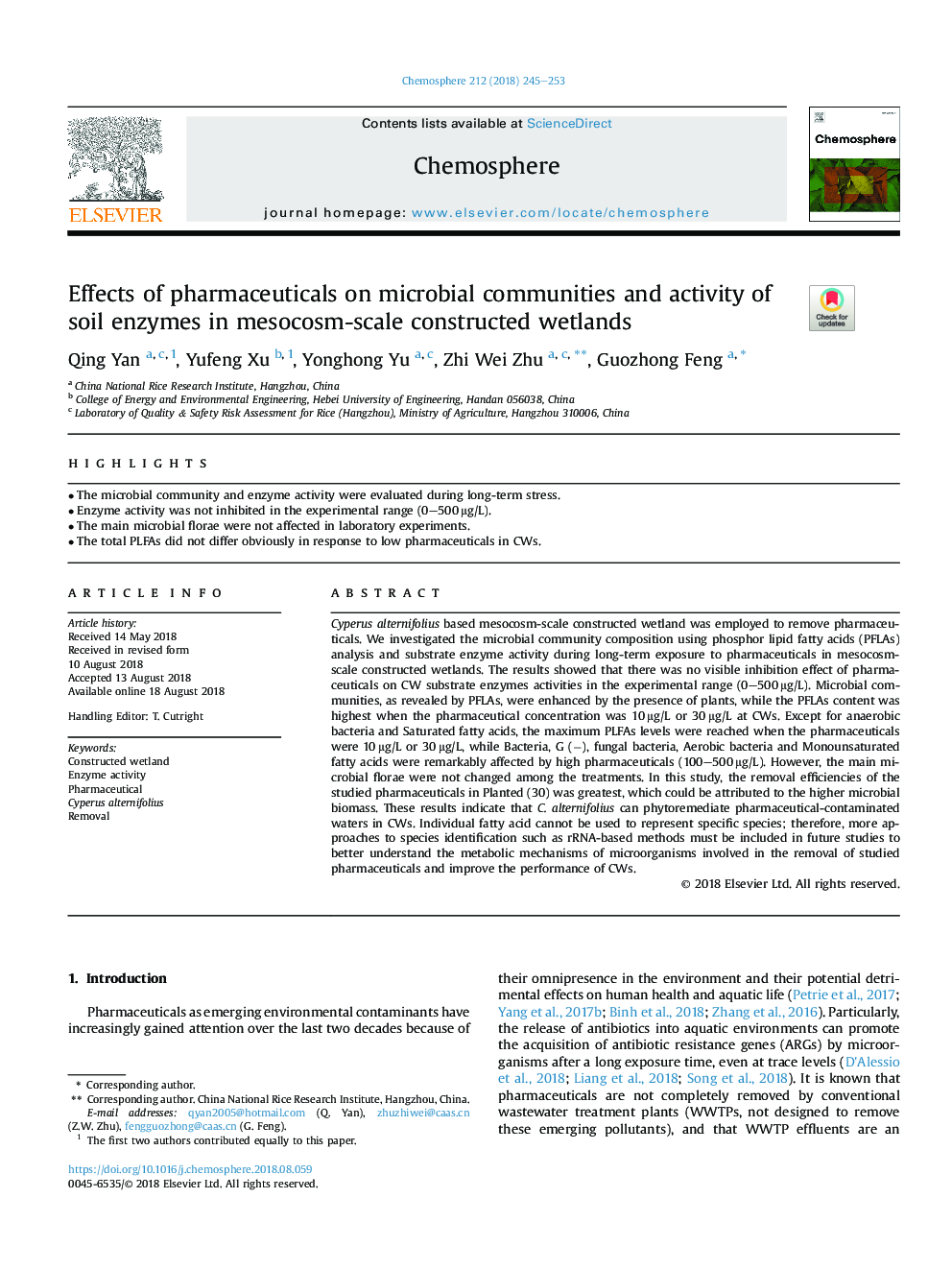| Article ID | Journal | Published Year | Pages | File Type |
|---|---|---|---|---|
| 8946132 | Chemosphere | 2018 | 9 Pages |
Abstract
Cyperus alternifolius based mesocosm-scale constructed wetland was employed to remove pharmaceuticals. We investigated the microbial community composition using phosphor lipid fatty acids (PFLAs) analysis and substrate enzyme activity during long-term exposure to pharmaceuticals in mesocosm-scale constructed wetlands. The results showed that there was no visible inhibition effect of pharmaceuticals on CW substrate enzymes activities in the experimental range (0-500â¯Î¼g/L). Microbial communities, as revealed by PFLAs, were enhanced by the presence of plants, while the PFLAs content was highest when the pharmaceutical concentration was 10â¯Î¼g/L or 30â¯Î¼g/L at CWs. Except for anaerobic bacteria and Saturated fatty acids, the maximum PLFAs levels were reached when the pharmaceuticals were 10â¯Î¼g/L or 30â¯Î¼g/L, while Bacteria, G (â), fungal bacteria, Aerobic bacteria and Monounsaturated fatty acids were remarkably affected by high pharmaceuticals (100-500â¯Î¼g/L). However, the main microbial florae were not changed among the treatments. In this study, the removal efficiencies of the studied pharmaceuticals in Planted (30) was greatest, which could be attributed to the higher microbial biomass. These results indicate that C. alternifolius can phytoremediate pharmaceutical-contaminated waters in CWs. Individual fatty acid cannot be used to represent specific species; therefore, more approaches to species identification such as rRNA-based methods must be included in future studies to better understand the metabolic mechanisms of microorganisms involved in the removal of studied pharmaceuticals and improve the performance of CWs.
Related Topics
Life Sciences
Environmental Science
Environmental Chemistry
Authors
Qing Yan, Yufeng Xu, Yonghong Yu, Zhi Wei Zhu, Guozhong Feng,
